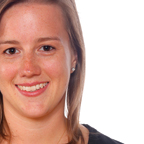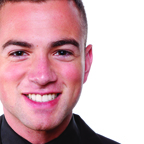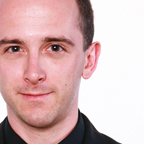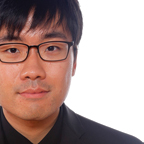From Mozart to Sibelius, New World members shine in concerto showcase
Apart from displaying the impressive level of talent in the New World Symphony, the orchestra’s annual concerto showcase gives audiences the opportunity to hear soloists on instruments other than the violin and piano.
And so Saturday night at New World Center in Miami Beach, we heard concertos for oboe, viola and flute, as well as the inevitable violin. The soloists, members of the orchestra who won the concerto competition, performed with the orchestra led by guest conductor Edwin Outwater. As a side note, while Juilliard may not be quite as dominant among U.S. music schools as many laymen believe, three of the four performers Saturday held degrees from the famed New York conservatory.
The concert opened with violist Madeline Sharp taking the stage to perform Bartók’s Viola Concerto. This was a masterful performance, with a free style of interpretation that suited this folk-inflected work, with quick shifts from a cool, almost sinister, tranquility to frenzied fast passages. She took advantage of the viola’s ability to sound darker and rougher than the violin, ripping into passages on the lower strings with rhythmic bite and power—but no loss of accuracy—that gave an apt uncivilized edge to the performance.
Yet she could play with great delicacy and grace, for example in the serene opening of the second movement. She had no difficult with the work’s considerable technical demands, including quick passages that took the soloist much higher up the fingerboard than is typically required of the viola, with the tones emerging with accuracy and clarity.
If a concerto for piano and orchestra represents something of a fair fight, would one for flute and orchestra be a rout? Not with the skillful writing of Carl Nielsen and the adept playing of New World flute player Henrik Heide.
Taking on the role of plucky protagonist against the full orchestra—and one particularly assertive bass trombone—-in Nielsen’s Flute Concerto, Heide put an individual stamp on Nielsen’s streams of melody. The soloist performed with as rich and full a tone as you’re likely to ever hear on the flute and never emitted a harsh sound, even when soaring up to the climax at the end of the first movement. In the second movement of this two-movement work, he adroitly handled the quickest passages, always giving an overarching sense of where the music was going rather than just playing the notes.
After the sinewy phrases and thunder of Bartók and Nielsen, Mozart’s Oboe Concerto came as a welcome interlude of melody and grace. Soloist Joseph Peters entered fully into the spirit of this work, giving a light, effortless and deftly phrased account of Mozart’s themes and the quick passages with which he developed them. In the second movement, he gave a songlike account of the long melodies, playing with an even tone and natural sense of phrasing. The third movement gave him the chance to show off a bit, and he played the quick trills and other fast finger-work with style and elegance.
In the Sibelius Violin Concerto, soloist Jin Suk Yu showed himself a considerable virtuoso. From the icy, lonely opening through the burly fast passages on the violin’s lowest string, it was clear he had a real feel for Sibelius’ strange Nordic world, as well as the technique to express it.
This is one of the most difficult violin concertos in the repertory, but he coolly conquered its technical demands—rapidly playing two or three simultaneous notes, deftly bouncing his bow across the strings, accurately playing the ghostly tones called artificial harmonics. In the second movement, he brought a rich, singing tone to the long melody that crescendos up the instrument’s throaty lowest string. The third movement barreled forward with a sense of momentum to the very end, as Yu brought to it a sense of excitement, with quick scales in thirds and other bravura passages dispatched with flair.
Although the orchestra played well throughout the evening, providing firm, sensitive support to the soloists, the Sibelius really gave it a chance to shine, and the orchestra delivered with the dark symphonic dramatic, powerful bursts of brass and solitary passages for wind instruments.
The program will be repeated 2 p.m. Sunday at New World Center in Miami Beach. nws.edu; 305-673-3331.
Posted in Performances
Leave a Comment
Sun Apr 13, 2014
at 12:19 pm
No Comments










